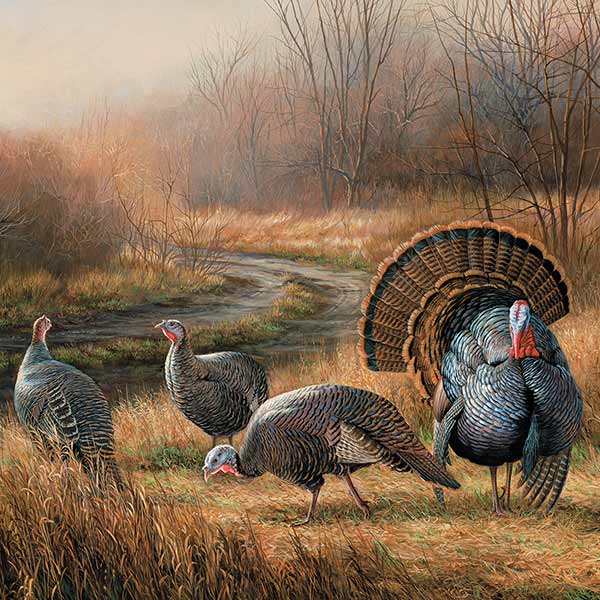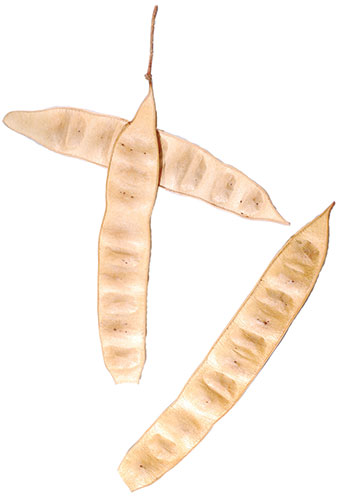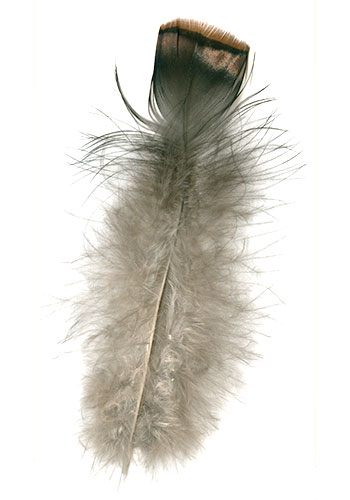Subtotal: $
Checkout-

Educating for the Kingdom
-

Being Obedient to Christ
-

Learning from Sister Charis
-

Coward, Take My Coward’s Hand
-

Mother Maria of Paris
-

The Good Samaritan
-

Readers Respond: Issue 7
-

Family and Friends: Celebrating Marriage
-

The Gospel at the Margins
-

Our Daily Bread
-

Forgiving Kim Jong-Il
-

Poem: Twilight
-

Snapshots from Lesbos
-

Family and Friends Issue 7
-

The Courage to Forgive
-

Insights on Mercy
-

Forgiving the Unforgivable?
-

Forgiving Dr. Mengele
-

The God Who Descends
-

The Weapons of Grace
-

Restorative Justice
-

Bard of God’s Circus
-

Editors’ Picks Issue 7

Next Article:
Explore Other Articles:
Upon its publication in June 2015, Pope Francis’s encyclical Laudato si’ drew predictably opposing reactions. For both fans and critics, the key term was “climate change.” Whether in the form of plaudits from the left or groans from the right, there seemed to be wide consensus that the central purpose of Laudato si’ was to call for reducing carbon emissions, with a few redistributionist flourishes thrown in for good measure.
Climate change is undoubtedly a crucial issue to Francis. Yet at the encyclical’s heart are concerns that challenge both sides of the partisan debate.
One such concern is the Pope’s call for recovering a sense of wonder. Through wonder, says Francis, we can learn to see the true value of “our common home,” the world in which we live and upon which we depend. “If we approach nature and the environment without this openness to awe and wonder,” he writes, “if we no longer speak the language of fraternity and beauty in our relationship with the world, our attitude will be that of masters, consumers, ruthless exploiters, unable to set limits on their immediate needs.” The encyclical certainly calls for thoughtful, far-seeing policy, but it also suggests that change will depend on grassroots spiritual renewal – on fostering an openness to wonder in our own lives and communities.
We often associate wonder with childhood, and perhaps for Francis, cultivating wonder is one way in which we can “become as little children.” My own daughter, now two and a half years old, has certainly helped me rekindle a sense of wonder. The storm clouds billowing up over the mountains, the spider webs glistening with dew in our garden, the fireflies flickering in the gathering night, the mockingbird’s song – her delight in these things has heightened my own.
But wondering children need sympathetic adults. Rachel Carson reflects on this in her 1965 work The Sense of Wonder, which describes introducing her young nephew to the Maine woods and seashores. Carson writes: “If a child is to keep alive his inborn sense of wonder, he needs the companionship of at least one adult who can share it, rediscovering with him the joy, excitement, and mystery of the world we live in.” This may be even truer today, more than half a century after Carson wrote these words. A child’s sense of wonder has probably always been fragile, easily fading with the transition into adulthood. But contemporary Western culture, with its pervasive consumerism, irony, and digital mediation, can be particularly inhospitable to it.
Looking back on my own childhood, I realize I was fortunate to have a number of sure guides to experiencing wonder. I grew up on a small dairy farm in central Pennsylvania. It was no straightforward idyll. A child growing up on a working farm learns early about death and suffering – the stillborn calf, the crops withered by drought, the fawn caught in a haybine. (A child’s experience of wonder is often accompanied by an awareness of the terrible.) All the same, there were pastures and woods to explore, I had meaningful work, and I was part of a warm community. My father taught me how to care for our cattle and how to sit patiently in the woods; my mother, how to garden and bird watch; a teenage neighbor, how to find crayfish under rocks in the stream and snakes under rocks in the woods. I had a remarkable teacher for two years in grade school who had us plant trees on the edge of the playground and vegetable seeds on our classroom windowsill. In Boy Scouts I camped and backpacked regularly in Pennsylvania’s many state parks.
I also had an older cousin named Tom, a skilled woodsman who took me on many adventures. In the spring we would wade through a sea of May apples, hunting for mushrooms. He taught me to identify trees, since morels tend to grow around ash trees. As evening descended we would listen for wild turkeys flying up to roost, and Tom would hoot like an owl to see if he could get them to gobble. Once, he took me up a steep hollow at twilight to watch a huge colony of bats fly out into a meadow to feed on insects. (The bats have since been devastated by white-nose syndrome, while the ash trees have succumbed to the emerald ash borer – a reminder that wonder can be destroyed not just by inner factors but also by external ones, and with more finality.)
I didn’t fully appreciate these childhood guides until I had a daughter of my own and began trying, often not as skillfully, to recreate some of their lessons for her. Carson notes that many adults who want to kindle wonder in children are daunted by the task. They worry that they don’t know enough about their local ecosystems – about the bugs, birds, and animals, about the trees and flowers, about the rocks and fossils – to guide a question-asking child. Few of us, after all, are nature sages like Carson (or my cousin Tom, for that matter). But she says that “for the child, and for the parent seeking to guide him, it is not half so important to know as to feel.” What children primarily need is someone to wonder with them.
Indeed, to treat their wonder as only a matter of factual questions to be answered may only serve to limit it. According to Aristotle, wonder accompanies our questions about the world and ceases as we find the answers. It is productive – a curiosity or bafflement that spurs our thinking – but it should ultimately be overcome. There is something commonsensical about this. It describes a learning process that we have probably all experienced, in which initial curiosity is eventually sated by inquiry and discovery. It is unsurprising that this has been one of the dominant ways of thinking about wonder in Western history.
But Aristotle’s teacher Plato described a different possibility, one that has influenced Christian reflection on the glory of creation. It is openness to this sort of wonder that Pope Francis calls for in Laudato si’. Plato held that the world is inexhaustibly wondrous, since it provides apprehensions of the ideal forms. This wonder does not point to a fillable knowledge gap but to the irreducible mystery that there is something rather than nothing, a mystery that ultimately renders all existence uncanny. It often catches us unawares – we walk past the same maple dozens of time without even looking at it until its fiery red foliage arrests us one October day – but we can cultivate openness to it. It raises the largest theological and philosophical questions about the universe, but it also helps us to see even the small and familiar with new eyes. As Kathleen Raine, the twentieth-century Platonist, puts it in her poem “Soliloquies”:
Incredible that anything exists – this hotchpotch
World of marvels and trivia, and which is which?
If some strands of Platonism have denigrated the material world, Raine’s lines point to other possibilities. We see an example of this in children. They are certainly hungry for knowledge, but they have not lost their sense of wonder or been numbed to the strangeness of existence.
These two sorts of wonder are not rigidly opposed; inquiry does not necessarily dissipate wonder. Learning about, say, the symbiotic relationship between honey bees and flowering plants can actually heighten our awe. Carson claims that “if facts are the seeds that later produce knowledge and wisdom, then the emotions and the impressions of the senses are the fertile soil in which the seeds must grow.” Many scientists and naturalists, like Carson herself, not only have been led to the microscope by a sense of wonder, but also have wondered at what they discovered there.
Still, as Carson’s metaphor for wonder as “fertile soil” suggests, facts alone are sterile. “It is possible to compile extensive lists of creatures seen and identified without once having caught a breath-taking glimpse of the wonder of life,” she cautions. To squelch wonder in this way is to lose a source of great experiential depth and resonance, and it can also lead to a dangerous attitude toward nature. The quest for knowledge can easily give way to a hunger for mastery and domination. A nature shorn of wonder can easily become a nature shorn of all value except utility. This has too often been the case in modernity, as the combination of reductive science and a reductive economics have reframed how we see the world, reducing it to exploitable resources.
There is much at stake in our attitudes toward wonder. In fostering wonder, we also cultivate gratitude, reverence, and care. Wendell Berry captures this truth memorably in his poem “The Mad Farmer Manifesto”:
To be sane in a mad time
is bad for the brain, worse
for the heart. The world
is a holy vision, had we clarity
to see it – a clarity that men
depend on men to make.
It can often feel like our cultural grasp of this vision is blurry at best. Instead of despairing, though, perhaps we should carry a child outside to look up at the stars. That seemingly trivial gesture may be what we need, as Pope Francis suggests in Laudato si’, to see the world clearly for what it is – as God’s holy handiwork, to be approached gratefully and with awe.
 Rosemary Millette, Wild Wings (detail).
Rosemary Millette, Wild Wings (detail).From artbarbarians.com


Writings discussed in this essay:
Laudato si’ Encyclical Letter on Care for Our Common Home
Pope Francis, published 2015 at www.vatican.va
The Sense of Wonder
Rachel Carson
Harper and Row, 1965
Steven Knepper teaches English at the Virginia Military Institute.
Already a subscriber? Sign in
Try 3 months of unlimited access. Start your FREE TRIAL today. Cancel anytime.
































